
D'Youville University is a private university in Buffalo, New York. It was founded as D'Youville College in 1908 and named by the Grey Nuns after the patroness saint Marie-Marguerite d'Youville. As of fall 2022 D'Youville College served 2,518 students and had 54 degree majors the health sciences, business, and liberal arts for undergraduate and graduate students. In February 2022, the New York State Board of Regents approved a name change to D'Youville University.
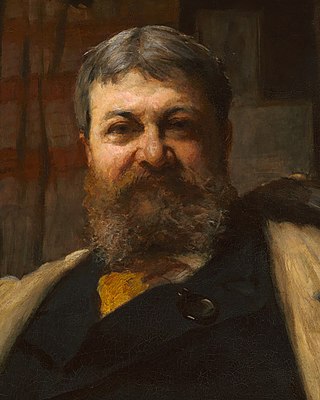
Henry Hobson Richardson, FAIA was an American architect, best known for his work in a style that became known as Richardsonian Romanesque. Along with Louis Sullivan and Frank Lloyd Wright, Richardson is one of "the recognized trinity of American architecture."

Calvert Vaux FAIA was an English-American architect and landscape designer. He and his protégé Frederick Law Olmsted designed parks such as Central Park and Prospect Park in New York City and the Delaware Park–Front Park System in Buffalo, New York.

William Ballard "Sam" Hoyt III is an American politician from New York. A Democrat, Hoyt is an economic development professional and was a member of the New York State Assembly from 1992 to 2011. He represented the 144th Assembly district, consisting of part of Buffalo, New York, and all of Grand Island, New York, from 1992 to 2011. Hoyt was first elected to succeed his late father, William Hoyt. He resigned from office in 2011 after a sexual harassment suit and he previously was the subject of an ethics investigation in 2008 concerning a two-year sexual relationship with a 23-year-old assembly intern, named Lori Gradwell.

The George F. Barton House was designed by Frank Lloyd Wright, built 1903–1904, and is located at 118 Summit Avenue in Buffalo, New York. The Barton House is part of the larger Darwin D. Martin House Complex, considered to be one of the most important projects from Wright's Prairie School era.
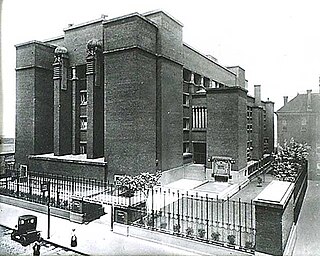
The Larkin Building was an office building in Buffalo, New York, noted for innovations that included central air conditioning, built-in desk furniture, and suspended toilet partitions and bowls. Located at 680 Seneca Street, it was demolished in 1950.
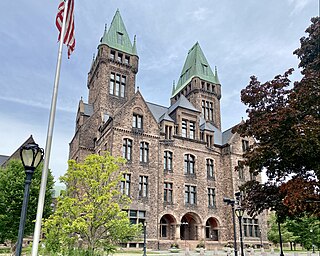
The Richardson Olmsted Campus in Buffalo, New York, United States, was designated a National Historic Landmark in 1986. The site was designed by the American architect Henry Hobson Richardson in concert with the famed landscape team of Frederick Law Olmsted and Calvert Vaux in the late 1800s, incorporating a system of treatment for people with mental illness developed by Dr. Thomas Story Kirkbride known as the Kirkbride Plan. Over the years, as mental health treatment changed and resources were diverted, the buildings and grounds began a slow deterioration. By 1974, the last patients were removed from the historic wards. On June 24, 1986, the former Buffalo State Asylum for the Insane was added to the National Historic Landmark registry. In 2006, the Richardson Center Corporation was formed to restore the buildings.

The Reformed Church of Beacon, originally the Reformed Dutch Church of Fishkill Landing, is a historic and architecturally-significant church in Beacon, New York. The congregation, who no longer occupies the building, claims it is the oldest church in Beacon. It is located on NY 9D about 0.5 miles (1 km) south of Beacon's municipal complex and downtown area and overlooks the Hudson River from a bluff.
Francis ("Frank") R. Kowsky is a notable architectural historian and State University of New York (SUNY) Distinguished Professor of Fine Arts at Buffalo State College, SUNY, Buffalo, New York. He has published books and articles about nineteenth-century American architects such as Frederick Withers, Calvert Vaux, and H. H. Richardson, as well as the architecture and landscape of Buffalo and northwestern New York State. He is active in the field of historic preservation having served on the New York State Board for Historic Preservation, and the Board of Directors of the Preservation Coalition of Erie County, New York, and currently serving as a trustee of the National Association for Olmsted Parks.

The Gowanda Correctional Facility was a medium-security prison for men located in Gowanda, New York, United States. The prison was located in the south part of Erie County in the Town of Collins. It was adjacent to the Collins Correctional Facility, another medium-security prison. Both prisons were located north of Village of Gowanda at the southern end of Erie County. It opened in 1994 and closed in 2021.

Lafayette Square is a park in the center of downtown Buffalo, Erie County, New York, United States, that hosts a Civil War monument. The block, which was once square, is lined by many of the city's tallest buildings. The square was named for General Lafayette, who visited Buffalo in 1825.
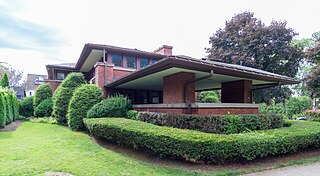
The William R. Heath House was designed by Frank Lloyd Wright, built from 1903 to 1905, and is located at 76 Soldiers Place in Buffalo, New York. It is built in the Prairie School architectural style. It is a contributing property in the Elmwood Historic District–East historic district and a City of Buffalo landmark.

William Dorsheimer House is a historic home located at Buffalo in Erie County, New York, that was listed on the National Register of Historic Places in 1980.

The Walter V. Davidson House, located at 57 Tillinghast Place in Buffalo, New York, United States, was designed by Frank Lloyd Wright and built in 1908. It is an example of Wright's Prairie School architectural style. The house is a contributing property to the Parkside East Historic District, a neighborhood laid out by renowned American landscape architect Frederick Law Olmsted in 1876, and also a City of Buffalo landmark.

Martin Luther King Jr. Park, originally The Parade and after 1896, Humboldt Park, is a historic park located in Buffalo in Erie County, New York. The park is located in east Buffalo and bisected by Fillmore Avenue.
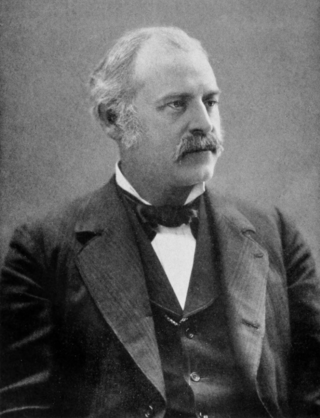
Andrew Jackson Warner, also known as A. J. Warner, was a prominent architect in Rochester, New York.
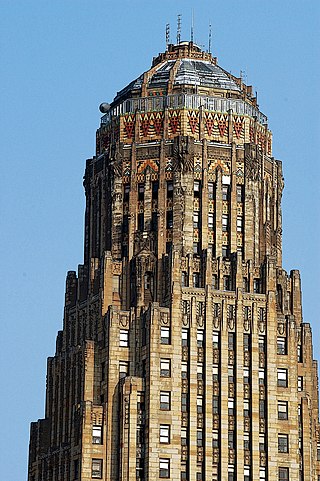
The Architecture of Buffalo, New York, particularly the buildings constructed between the American Civil War and the Great Depression, is said to have created a new, distinctly American form of architecture and to have influenced design throughout the world.

TenBerke is a New York City, based architecture and interior design firm founded and led by Deborah Berke, who concurrently serves as Dean of the Yale School of Architecture.
Esenwein & Johnnson was an architectural firm of Buffalo, New York.
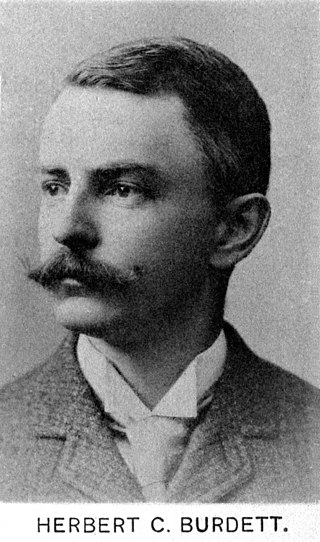
Herbert Channing Burdett (1855–1891) was an American architect trained in the office of Henry Hobson Richardson who, in a brief career, established himself as a successful designer of Shingle Style and Richardsonian Romanesque buildings in western New York. With his partner James Herbert Marling (1857–1895), Burdett designed several public buildings in Buffalo, New York and a number of residential properties for the leading citizens of Buffalo, Woodstock, Ontario and Burlington, Vermont. Owing to his premature death, Burdett is little remembered today outside those areas where his known buildings still survive.

















